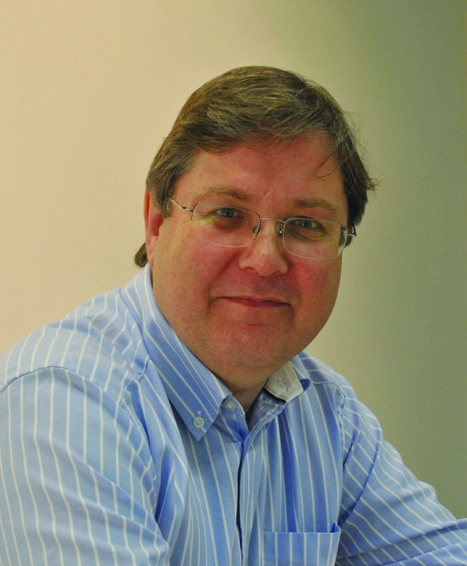Sat on the floor of a Hyatt Regency Hotel in the heart of San Francisco’s financial district, the Technology Strategy Board’s (TSB) head of sustainability, Richard Miller – the man responsible for allocating £25m of the organisation’s £300m annual budget – appears surprisingly relaxed given the amount of work he is currently overseeing.We’re on the Clean and Cool Mission with 16 of Britain’s most promising clean-tech companies, hoping to secure investment from Silicon Valley’s wealthy venture capitalists.

While in a city which proclaims itself the greenest in the US - where public buses are powered by overhead electric cables and homeless people fill shopping trolleys of plastic bottles to trade in for money - the conversation is somewhat appropriately dominated around how the UK will meet the challenges facing its cities.
The opening of the TSB’s Future Cities catapult centre in March 2013 is one of the things keeping Miller busy when he’s not photographing constellations from his rural back garden in North Wales. The location of the centre has not yet been decided on.
The TSB, as the UK’s innovation agency, was in 2010 tasked with establishing and overseeing a network of world-class technology and innovation centres to help commercialise the results of research in specific focus areas. A series of catapults were set up to help stimulate economic growth by focusing on innovations that will give UK businesses a technological edge in global markets, potentially worth hundreds of billions of pounds every year. In October 2011, the TSB announced it would be dedicating £200m-plus of initial funding to seven catapult centres, which include: high-value manufacturing, cell therapy, offshore renewable energy, satellite applications, connected digital economy, transport systems and future cities.
Through the catapult centres, the TSB will provide one-third of funding to relevant projects with another two-thirds expected to be derived from competition funding and industry.
The aim of the Future Cities catapult is to bring together all the individual systems that make up a city under one physical roof. ‘An awful lot of work has gone into improving and optimising the various city systems,’ said Miller. ‘But there’s a strong feeling that we can’t get to the place cities want to be in order to be successful by optimising those individual systems. You have to start thinking about the city as a system of systems and the way they act together.’
Cities will face more stress from climate change and the urban island heat effect
Miller referred to an example of a team on one side of a building trying to design a low-carbon transport system for a city based on existing commuting patterns and a digital team looking into how ultra-high-speed broadband can redefine a job by allowing people to work from home. ‘They’re not necessarily talking to each other and we think they need to be,’ he said.
Miller hopes that sectors, that have never traditionally had the opportunity to work together before, will be able to compliment one another and produce sustainable, interlinked cities where each system works in harmony with the next.
While cities have a reputation for being the largest CO2 emitters, their footprint per person is actually relatively low. ‘In most of the developed world, cities are actually relatively energy efficient because they’re so dense,’ explained Miller, who is an Imperial College chemistry graduate who went on to become an academic at Manchester University. ‘So if you live in London you have a carbon footprint 40 per cent that of the average person in the UK. If you life in Manhattan you have a carbon footprint 12.5 per cent of a person in Nebraska.’
But, according to Miller, these relatively green folk are going to come under increasing pressures. ‘Cities are going to face more and more stress as a result of climate change and the urban heat island effect,’ he said.
The urban heat island effect is only too apparent in the English capital where the summer heat wave of 2003 resulted in 600 excess heat deaths in London alone. Satellite images later revealed the heart of the city was 9-10°C hotter than some of the outskirts.
However, the same urban heat island factors that lead to overheating in summer can also keep us warm in winter; a time when there are even more fatalities as a result of fuel poverty. One only needs to look at the winter of 2007-08 when 25,000 excess deaths occurred in England and Wales.
Clearly, the heat management of UK buildings needs to improve in order to prevent such events repeating themselves. Improving insulation in buildings can improve the level of comfort for inhabitants throughout the year while also significantly cutting energy consumption.
‘In the UK about 47 per cent of carbon emissions come from buildings,’ said Miller. ‘If you’re going to achieve the 80 per cent cut by 2050, clearly buildings have to pay a big part.
You have to start thinking about the city as a system of systems and the way that they act together
‘We have to deliver the economy and quality of life with a lower environmental footprint,’ said Miller. ‘People talk about how we can decouple growth from materials use and resource consumption. That’s the challenge cities are facing.’
Miller believes that technology developed to benefit cities in the UK could also boost the country’s economic performance as that technology is then exported around the world to help both developed and undeveloped countries.
The UCL/Lancent Commission on Healthy Cities claimed in its latest report that the health of city dwellers is one of the key issues facing the global population, with access to drinking; air quality; and inadequate heating and cooling at the forefront of the most serious issues. While 3.4bn people currently reside in urban areas, this is projected to rise to 6.3bn by 2050.
The effectiveness of the TSB’s catapult programme is yet to be determined but those behind the latest breed appear to be as optimistic with theirs as Dennis the Menace is with his.

Richard Miller
Head of sustainability, Technology Strategy Board
Education
1976 BSc Chemistry, Imperial College London
1980 PhD Bio-inorganic Chemistry, University of Manchester
Career
1980 Lecturer, Department of Instrumentation and Analytical Science, University of Manchester Institute of Science and Technology
1986 Principal scientist and divisional manager, measurement science, Unilever Research
1989 Principal scientist and divisional manager, chemicals research, Unilever Research
1993 Vice-president R&D, Unichema International
1998 Senior research fellow ICI and director of knowledge and sustainability, Uniqema
2001 Founder Miller-Klein Associates - innovation and sustainability consultancy
2007 Innovation platform leader, low-impact buildings, Technology Strategy Board
2010 Head of sustainability, Technology Strategy Board
Q&A
Average day?
There probably isn’t an average day. So I have two jobs in the organisation. One job is to help us get the whole idea of sustainability into everything that the Technology Strategy Board does. The other half of my job is running some of the programmes. I’m responsible for:
- Particularly low-impact buildings and built environments
- Sustainable agriculture of food
- Resource efficiency
- Future cites
How many projects does the TSB fund?
Year-on-year grants vary but in the four years to November last year we did 2,000 collaborative projects involving 4,000 companies. On top of that there have been several hundred direct contracts to do various things. On top of that there are the knowledge transfer partnerships, which is about putting someone in place to do knowledge transfer.
The number of applicants for each competition can vary quite considerably. Some sectors of industry are very familiar with us; familiar with collaborating with universities and familiar with government funding. So there you tend to get a lot of good-quality applications.
We have a grant particularly for small companies called the SMART award that comes in three levels, with the top one worth £150,000. That is open on a rotating cycle throughout the year. You can rock up with any idea for any sector. That is heavily oversubscribed because it’s so open.
How does the TSB allocate funding?
We have a standard set of questions. In everything we do we’re asking four questions:
1) What is the size of the market? Is it attractive enough because we’re looking for payback into the UK economy.
2) Do we have the capability to do this? Can we play at the top table in this area? Do we have the right kind of companies? Do we have the supply chain? Is the IP in the right place?
3) Timing? Why now? Is there a window of opportunity that has been opened by new legislation? Is there a shift in the market?
4) If you have got a good answer to the first three then why do you need government funding? It can be ‘we understand it but it is very risky for us’ or ‘to do this we need to work alongside a supply chain’.
We always use independent assessors. So we have panels of assessors for each competition. We never interfere with judging. Five judges from academia and business will typically see each project. It’s a mix but they look at the market and need and check the innovation. Has this been done before? You need people who know the market.










WildFusion helps robot traverse difficult terrain
<a...